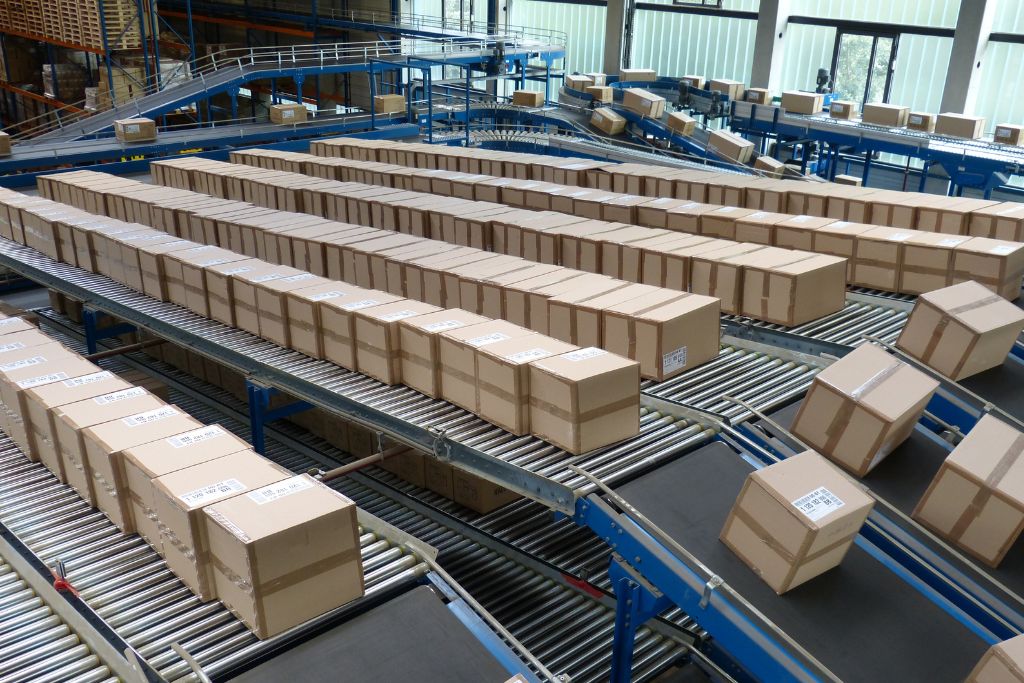The food industry is one of the most demanding in logistics. Maintaining the right temperature, delivering products on time and keeping thousands of fragile packages safe are crucial here. Each of these elements determines the quality of the products and the profitability of the entire supply chain.
In this article, you'll find a clear definition of food logistics, an analysis of its biggest challenges, and practical optimization methods to make your business run faster, safer and more efficiently. You'll also learn about Intralog's solutions that help manufacturers protect delicate products, maintain full temperature control, reduce lead times and cut waste with automation of warehouse and transport processes.
Food logistics - what is it?
Food logistics is a complex process that involves managing the flow of food products - From the producer to the point of sale, including their storage and transportation. The goal? To deliver fresh products on time, at the right temperature and quality, with safety and minimizing costs and losses.
It is also an area where the smooth operation of all links in the supply chain is crucial. What challenges do you face to make this process work flawlessly every day?
Key challenges of food logistics
The food industry poses a number of unique challenges for logistics, which require precise organization, appropriate technology and experience to ensure product safety and quality at every stage of the supply chain. Among the most important of these are:
- Delicacy of food packaging
Food products such as yogurt, beverages and prepared meals require special care during storage and transportation to avoid damage to packaging. - Constant temperature control
Maintaining precisely controlled temperatures in refrigerated warehouses and transportation (typically between +2°C and +8°C) is key to keeping products fresh and safe. - Non-simultaneous receipt of goods
In the food industry, especially when distributing to multiple stores, drivers often pick up goods at different times. This requires precise organization of logistics and loading according to delivery routes. - Varied expiration dates
Food products have different expiration dates, and this requires extremely careful inventory management to avoid waste and wastage.
How to optimize food logistics?
Food logistics is an industry where there is no room for error. Here are key areas to improve to increase operational efficiency in the food industry:
1. keep delicate products safe
Food products such as yogurts, beverages and prepared meals are particularly susceptible to damage during transportation and storage.
How to take care of the logistics of delicate food products?
- Implement packaging and sorting automation systems tailored to the type of products.
- Use technologies that protect packaging from shock and damage.
- Conduct regular training for employees on the safe handling of sensitive products.
2. ensure constant temperature control
Refrigerated products require storage at precisely controlled temperatures (typically +2°C to +8°C) to maintain freshness, quality and health safety.
How to ensure consistent temperature control in food logistics?
- Invest in advanced refrigerated storage and transportation systems with online monitoring.
- Establish rapid response procedures in the event of a cooling failure.
- Regularly service refrigeration equipment to avoid downtime.
3. plan delivery routes to include non-simultaneous pickup
In distribution to multiple pickup points, drivers often have different loading and delivery times, which complicates logistics.
How to optimize delivery routes in food logistics?
- Implement WMS and TMS systems to plan delivery routes in real time.
- Analyze data from previous routes to eliminate delays.
- Use loading automation according to customer schedules and priorities.
4 Effectively manage product expiration dates
Different expiration dates require precise inventory management to avoid possible financial losses and food waste.
How to optimize?
✅ Plan promotions or discounts for products with shorter expiration dates.
✅ Use WMS systems that allow you to check expiration dates in real time.
✅ Apply the FEFO (First Expired, First Out) principle, i.e., pick and release first those products with the earliest expiration date. In this way, you minimize the risk of expired goods and reduce losses.
How do we at Intralog support food manufacturers and distributors?
At Intralog, we provide solutions that effectively streamline food logistics From the moment the finished pallets leave production to their storage and transportation.
We automate:
- Pallet and parcel handling - We design and integrate pallet transport systems, roller and belt conveyors, pallet elevators and warehouse stacker cranes that ensure the fast and safe flow of goods in the warehouse.
- Refrigerated storage - We provide racking systems and pallet conveyors adapted to low-temperature operation, with full monitoring of parameters, which guarantees the safety of products requiring refrigeration.
- Picking and distribution of pallets - We implement advanced WMS and TMS systems that enable efficient scheduling of loading, transportation and receipt of goods at different times according to the schedules of retail chains.
- Expiration date management at the pallet level - We integrate solutions that allow prioritization of pallet releases according to the FEFO principle, which minimizes losses and improves the rotation of goods in the warehouse.
With our solutions, your company gains full control over logistics processes, reduces operating costs and increases security and efficiency of pallet and parcel transport throughout the supply chain.
Want to learn how we can improve your company's logistics? Get in touch with our consultants!
TAKE A LOOK AT OUR SOCIAL MEDIA:





